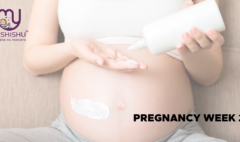Ovulation Fertility: Supercharge Your Chances
Ovulation Fertility: Supercharge Your Chances
Introduction
Ovulation fertility, the cornerstone of fertility, is the compass guiding those on the path to parenthood. In the intricate dance of conception, understanding the nuances of ovulation becomes paramount. This comprehensive guide embarks on an illuminating journey into the marvels of ovulation, unraveling the scientific intricacies that mark a woman’s fertile phase. Beyond the biological rhythms, we explore the tangible implications of ovulation for those aspiring to conceive.
Join us as we demystify the complexities, unravel the secrets of the menstrual cycle, and empower you with the knowledge to pinpoint your fertile window effectively. Your expedition into parenthood commences with decoding the essence of ovulation fertility, and we’re here to steer you through each significant stride.
What is ovulation fertility? Unveiling the Heartbeat of Fertility
Ovulation fertility, a pivotal event in a woman’s menstrual cycle, marks the release of a mature egg from the ovaries, ready to embark on a potential journey of conception. This intricate process typically occurs around the midpoint of the menstrual cycle, orchestrated by the delicate interplay of hormones. As a cornerstone of fertility, ovulation sets the stage for the prospect of pregnancy, unveiling the fertile window during which conception is most likely. Understanding ovulation involves deciphering the body’s biological cues, from changes in cervical mucus to fluctuations in basal body temperature.
In this exploration, we unravel the biological heartbeat of fertility, demystifying ovulation and empowering individuals and couples with the knowledge to navigate their unique journey toward parenthood.
Ovulation, Conception, and Pregnancy: A Symphony of Life
Ovulation fertility, the harmonious release of a mature egg from the ovaries, sets the stage for the delicate dance of conception. During this fertile window, typically occurring mid-cycle, the fusion of egg and sperm becomes a possibility. Conception, a breathtaking union of genetic material, unfolds with the potential to initiate the remarkable journey of pregnancy. The fertilized egg transforms into a zygote, then a blastocyst, embarking on a miraculous voyage toward the uterus.
Upon successful implantation, pregnancy begins, characterized by the nurturing of a developing embryo. Ovulation, conception, and pregnancy intricately weave the fabric of life, each step laden with awe-inspiring biological processes. Understanding this symphony is key for those navigating the path to parenthood, as the orchestration of ovulation fertility sets the stage for the profound symphony of life to unfold.
When does ovulation occur? Decoding the timing of fertility
Ovulation fertility, the cornerstone of fertility, follows a carefully choreographed timeline within a woman’s menstrual cycle. In a typical 28-day cycle, ovulation commonly occurs around the 14th day, counting from the first day of menstruation. However, menstrual cycles vary, and the timing of ovulation is influenced by individual factors. Monitoring the menstrual cycle’s length, recognizing changes in cervical mucus, and employing ovulation predictor kits are valuable tools for pinpointing ovulation.
Understanding these cues helps individuals and couples identify their fertile window, optimizing the chances of conception. Whether aiming to conceive or avoid pregnancy, unraveling the mystery of when ovulation occurs is a crucial aspect of family planning, offering insights into the intricate rhythms of the reproductive journey.
Detecting Ovulation Fertility
Ovulation fertility manifests through subtle indicators such as a change in cervical mucus consistency, a mild twinge or ache on one side (mittelschmerz), and a slight rise in basal body temperature. Ovulation predictor kits and tracking menstrual cycles provide additional cues, empowering individuals to identify their fertile window with greater precision.

Signs and Symptoms of Ovulation Fertility: A Comprehensive Guide to Your Fertile Window
Understanding the signs and symptoms of ovulation is pivotal for those navigating the journey of conception. Here’s a detailed exploration of the key indicators that mark the fertile window:
- Changes in Cervical Mucus:
- Description: As ovulation approaches, cervical mucus undergoes a noticeable transformation. It becomes clear, slippery, and stretchy, resembling the consistency of egg whites. This change is orchestrated by rising estrogen levels, creating an optimal environment for sperm survival and mobility.
- Interpretation: Increased cervical mucus facilitates the journey of sperm through the reproductive tract, enhancing the likelihood of successful fertilization.
- Mittelschmerz (Ovulation Pain):
- Description: Mittelschmerz, a German term for “middle pain,” refers to a mild, one-sided pelvic ache experienced by some individuals during ovulation. This discomfort typically occurs on the side where the ovary is releasing an egg.
- Interpretation: Mittelschmerz provides a physical indication of the ovulation process, signaling the release of an egg from the ovary.
- Basal Body Temperature (BBT) Rise:
- Description: Tracking basal body temperature involves monitoring the body’s resting temperature. A slight increase in BBT, typically around 0.5 to 1 degree Fahrenheit, occurs after ovulation due to the hormone progesterone.
- Interpretation: Detecting a BBT rise serves as a retrospective confirmation of ovulation, indicating the transition from the follicular phase to the luteal phase of the menstrual cycle.
- Heightened Libido:
- Description: Ovulation fertility often coincides with an increased desire for sexual activity. This heightened libido is nature’s way of encouraging procreation during the most fertile phase of the menstrual cycle.
- Interpretation: Increased sexual desire aligns with the body’s natural reproductive instincts, enhancing the chances of conception.
- Breast Tenderness:
- Description: Some individuals may experience mild breast tenderness or sensitivity during ovulation. Hormonal fluctuations, particularly an increase in estrogen, contribute to these changes.
- Interpretation: Breast tenderness serves as a hormonal marker, reflecting the dynamic shifts occurring in the body during the ovulatory phase.
- Positive Ovulation Predictor Kit (OPK):
- Description: Ovulation Predictor Kits (OPKs) detect the surge in luteinizing hormone (LH) that precedes ovulation. A positive result indicates the imminent release of an egg.
- Interpretation: A positive OPK provides a reliable, real-time indication of the fertile period, assisting in timed intercourse for conception.
- Light Spotting:
- Description: Ovulation spotting refers to a small amount of light bleeding or spotting that may occur during ovulation. This phenomenon is attributed to hormonal fluctuations.
- Interpretation: While not universal, ovulation spotting can be a subtle sign of fertility, offering additional clues about the timing of ovulation.
- Increased Energy and Sensitivity:
- Description: Some individuals may experience a boost in energy levels and heightened emotional sensitivity during ovulation. These changes are influenced by hormonal shifts.
- Interpretation: Increased vitality and emotional sensitivity align with the body’s preparation for potential pregnancy, creating an environment conducive to optimal reproductive success.
Recognizing and interpreting these signs and symptoms empowers individuals and couples with a deeper understanding of the menstrual cycle, facilitating informed family planning decisions. Whether aspiring to conceive or prevent pregnancy, the nuances of ovulation provide valuable insights into reproductive health and fertility awareness.
What Happens If I’m Not Ovulating? Understanding An ovulation
Ovulation fertility is a critical component of the menstrual cycle, and its absence, known as anovulation, can impact fertility and overall reproductive health. Here’s an exploration of what happens if you’re not ovulating:
- Menstrual Irregularities:
- Description: Anovulation often leads to irregular menstrual cycles. The absence of ovulation disrupts the typical hormonal patterns, resulting in unpredictable or absent menstruation.
- Impact: Menstrual irregularities can make it challenging to predict the fertile window, affecting family planning efforts.
- Difficulty Conceiving:
- Description: Anovulation is a common cause of infertility. Without the release of a mature egg, the opportunity for fertilization and conception is limited.
- Impact: Couples may face difficulties in achieving pregnancy, necessitating medical evaluation and intervention.
- Hormonal Imbalances:
- Description: An ovulation is often associated with hormonal imbalances, such as elevated levels of androgens (male hormones) and disrupted levels of estrogen and progesterone.
- Impact: Hormonal imbalances can have broader implications for overall health, including the potential for symptoms like acne, hirsutism, and mood changes.
- Polycystic Ovary Syndrome (PCOS):
- Description: PCOS is a common cause of anovulation. It involves the development of small cysts on the ovaries, disrupting the regular ovulatory process.
- Impact: PCOS is associated with multiple health challenges, including fertility issues, insulin resistance, and metabolic concerns.
- Impact on Fertility Treatments:
- Description: Anovulation may require assisted reproductive technologies, such as fertility medications or assisted reproductive procedures like in vitro fertilization (IVF).
- Impact: Seeking fertility treatments becomes a common path for individuals not ovulating naturally, adding complexity to the journey to parenthood.
- Underlying medical conditions:
- Description: Conditions such as thyroid disorders, premature ovarian failure, or certain chronic illnesses can contribute to anovulation.
- Impact: Identifying and addressing underlying medical conditions is crucial for managing anovulation and improving overall health.
- Potential for Secondary Amenorrhea:
- Description: Prolonged anovulation can lead to secondary amenorrhea, a condition characterized by the absence of menstruation for several months.
- Impact: Secondary amenorrhea warrants medical attention, as it may indicate underlying health concerns that require evaluation and management.
- Emotional Impact:
- Description: An ovulation fertility can have emotional repercussions, including stress, anxiety, and frustration, particularly for individuals actively trying to conceive.
- Impact: Emotional well-being is an integral aspect of overall health, and addressing the emotional impact of anovulation is crucial for holistic care.
If you suspect ovulation fertility or experience irregularities in your menstrual cycle, seeking guidance from a healthcare professional is essential. A thorough evaluation can help identify the underlying causes of anovulation and guide personalized treatment plans to address fertility concerns and promote reproductive health.
Management and Treatment of Ovulation Fertility: Navigating the Path
Addressing anovulation involves a multifaceted approach aimed at restoring ovulatory function and enhancing fertility. Here’s a comprehensive guide to the management and treatment of anovulation:
- Lifestyle Modifications:
- Description: Adopting a healthy lifestyle is foundational. Maintaining a balanced diet, regular exercise, and managing stress can positively impact hormonal balance and promote regular ovulation.
- Treatment: Lifestyle modifications serve as a foundational step, potentially restoring ovulatory function and improving overall reproductive health.
- Weight Management:
- Description: Achieving and maintaining a healthy weight is crucial, as both obesity and underweight conditions can disrupt hormonal balance and contribute to anovulation.
- Treatment: Tailored weight management strategies, including dietary adjustments and exercise, are recommended to optimize fertility.
- Fertility Medications:
- Description: Ovulation fertility-inducing medications, such as clomiphene citrate or letrozole, may be prescribed to stimulate ovulation. These medications work by influencing hormonal signals that regulate the ovarian cycle.
- Treatment: Fertility medications are commonly employed to induce ovulation, especially in cases of conditions like polycystic ovary syndrome (PCOS).
- Hormone Therapy:
- Description: Hormone therapies, including gonadotropins or hormonal replacement therapies, may be recommended to regulate menstrual cycles and induce ovulation.
- Treatment: Hormone therapy aims to restore hormonal balance, facilitate regular ovulation, and improve fertility prospects.
- Surgery:
- Description: In certain cases, surgical interventions, such as ovarian drilling for women with PCOS, may be considered to address anatomical or structural issues impacting ovulation.
- Treatment: Surgical procedures are typically reserved for specific conditions that may benefit from targeted interventions.
- Assisted Reproductive Technologies (ART):
- Description: In vitro fertilization (IVF) and other ART procedures may be recommended for individuals facing persistent anovulation, providing advanced fertility treatments.
- Treatment: ART offers viable options for conception, bypassing ovulatory challenges and facilitating successful fertilization.
- Management of Underlying Conditions:
- Description: Identifying and managing underlying conditions contributing to anovulation, such as thyroid disorders or metabolic issues, is integral to comprehensive care.
- Treatment: Targeted interventions for underlying medical conditions can improve overall health and support the restoration of regular ovulation.
- Ovulation Monitoring and Tracking:
- Description: Regular monitoring of menstrual cycles, along with tracking ovulation through methods like basal body temperature charting, helps individuals understand their fertility patterns.
- Treatment: Ovulation fertility tracking serves as a proactive approach, enabling individuals to identify their fertile window and optimize conception efforts.
- Counseling and emotional support:
- Description: Emotional well-being is paramount. Counseling and support groups can provide individuals and couples navigating anovulation with strategies to manage stress and emotional challenges.
- Treatment: Emotional support complements medical interventions, fostering resilience and a positive mindset throughout the fertility journey.
Individualized treatment plans are tailored based on the underlying causes of anovulation, overall health, and the specific goals of individuals or couples. Collaborating with healthcare professionals specializing in reproductive medicine ensures personalized care, offering the best chances for successful management of ovulation fertility and the realization of ovulation fertility goals.
Prevention
If you’re grappling with irregular menstrual cycles, challenges in conceiving, or suspecting anovulation, it’s imperative to promptly consult a healthcare provider. Irregular periods or persistent difficulties in achieving pregnancy may indicate underlying issues that warrant professional evaluation. If you have a history of ovulatory disorders, recurrent pregnancy losses, or underlying health conditions like hormonal imbalances, seeking medical guidance early on is essential. Additionally, advanced age and fertility concerns merit consultation to explore options and address age-related factors affecting Ovulation fertility.
Persistent symptoms of ovulation fertility, emotional distress related to fertility struggles, or any deviation from your reproductive norm should prompt a visit to a healthcare provider. Seeking timely intervention allows for comprehensive assessments and personalized treatment plans, optimizing the chances of successful conception and fostering overall reproductive health and well-being.
Conclusion
Embarking on the intricate journey of understanding ovulation unveils a profound tapestry of life and fertility. In this exploration, we’ve decoded the nuances of ovulation fertility, from its biological rhythms to the signs and symptoms that guide us through the fertile window. Recognizing the significance of ovulation in conception, we delved into the potential challenges of anovulation and the diverse strategies for management and treatment. Whether navigating lifestyle modifications, fertility medications, or assisted reproductive technologies, the path to parenthood is as unique as the individuals embarking on it.
Remember, seeking healthcare guidance when needed is a proactive step, ensuring a thorough evaluation and personalized care. As we conclude this journey into the realm of ovulation fertility, may the insights gained empower you on your quest for reproductive wellness, offering hope, resilience, and the promise of new beginnings.
FAQs related Ovulation
-
How can I determine when I’m ovulating?
Track changes in cervical mucus, use ovulation predictor kits and monitor basal body temperature for effective ovulation detection.
-
What are the common signs of ovulation?
Look for increased cervical mucus, a mild pelvic ache, heightened libido, and a rise in basal body temperature.
-
Can lifestyle changes impact ovulation?
Yes, adopting a healthy lifestyle, including a balanced diet and regular exercise, positively influences ovulatory function.
-
When should I seek medical advice for ovulation concerns?
Consult a healthcare provider if experiencing irregular menstrual cycles, difficulties conceiving, or suspecting anovulation.
-
How is anovulation treated?
Treatment options include lifestyle modifications, fertility medications, hormone therapy, and, if necessary, assisted reproductive technologies.










